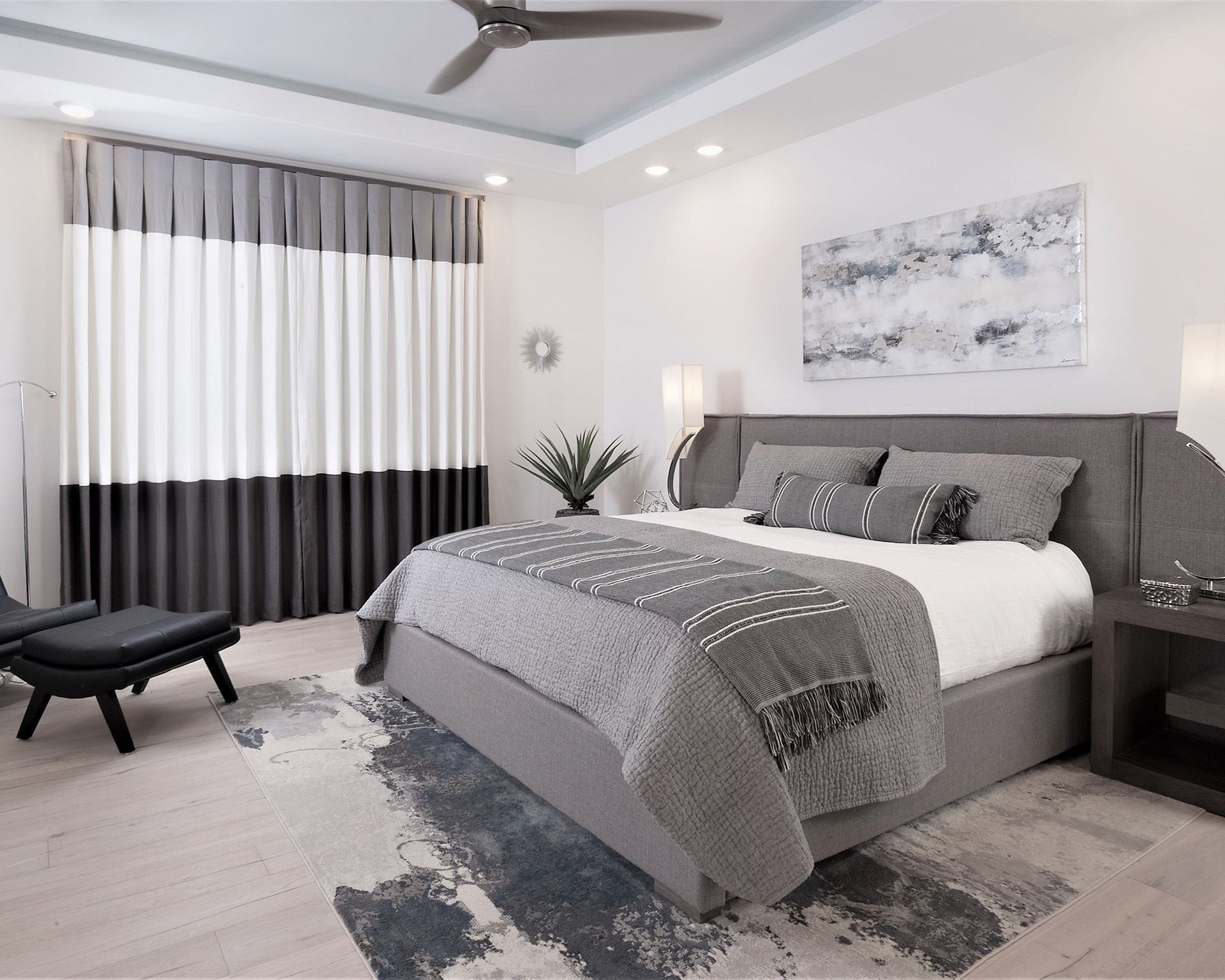Planning Your Ideal Bedroom Layout

Your bedroom is your sanctuary, a place to unwind, recharge, and express your personal style. A well-planned layout can enhance these aspects and create a space that truly feels like home. Functionality and flow are crucial elements that contribute to a comfortable and efficient bedroom environment.
Optimizing Space Utilization
Optimizing space in your bedroom is essential, especially if you have limited square footage. This involves maximizing functionality and minimizing clutter. Consider the following tips:
- Bed Placement: The bed is the focal point of the room. Position it strategically to ensure adequate space for movement around it. Avoid placing it directly under a window or in front of a door, as this can disrupt the flow of energy and make the room feel cramped.
- Storage Solutions: Incorporate storage solutions that maximize vertical space. This could include built-in shelves, drawers, or a combination of both. Utilize the space under your bed with storage containers or drawers.
- Traffic Patterns: Consider the natural flow of movement in your bedroom. Ensure there is ample space to move around furniture and access different areas of the room comfortably.
Sample Bedroom Layout
Imagine a small bedroom with a standard rectangular shape. Here’s a possible layout:
The bed is placed against the longest wall, leaving enough space for a nightstand on each side. A dresser is positioned on the opposite wall, creating a visual balance. A small desk or vanity is placed in the corner, maximizing space utilization. A floor lamp positioned near the bed provides ambient light.
This arrangement offers a functional and aesthetically pleasing layout. The bed is placed strategically, allowing for easy access and a sense of openness. The dresser provides ample storage, and the desk or vanity adds a multi-functional element to the space.
Choosing the Right Furniture and Decor: Design Your Bedroom Quiz

Your bedroom is a sanctuary, a place to relax, unwind, and recharge. To create a space that truly reflects your personality and promotes a sense of well-being, choosing the right furniture and decor is essential. This section will guide you through the process of selecting furniture pieces that complement your style and create a cohesive atmosphere.
Choosing Furniture
Furniture is the backbone of any bedroom, defining its functionality and aesthetics. Consider these key pieces:
- Bed: The centerpiece of your bedroom, the bed should be comfortable and stylish. Choose a size that fits your needs and the space available. Consider the material (wood, metal, upholstered), the headboard style, and the overall design to ensure it complements your room’s theme.
- Dresser: A dresser provides storage for clothes, jewelry, and other belongings. Choose a dresser with ample drawers and a style that complements the bed and other furniture.
- Nightstands: Nightstands offer convenient storage for books, lamps, and other essentials. Look for nightstands that match or complement the dresser and bed in style and material.
- Seating: A comfortable chair or ottoman provides a cozy spot for reading, relaxing, or putting on your shoes. Consider a chair or ottoman that complements the overall bedroom style.
Choosing Furniture Materials and Finishes
The materials and finishes of your furniture play a crucial role in defining the overall feel of your bedroom. Consider these factors:
- Wood: Wood furniture offers durability, warmth, and a natural aesthetic. Choose from various wood types, such as oak, maple, cherry, or walnut, each with its unique grain pattern and color.
- Metal: Metal furniture, often made of iron, steel, or brass, can bring a modern, industrial, or vintage feel to your bedroom. Metal furniture is also durable and easy to clean.
- Upholstery: Upholstered furniture provides comfort and adds a touch of softness to your bedroom. Choose from various fabrics, such as velvet, linen, leather, or cotton, considering their durability, texture, and color.
Choosing Furniture Styles
The style of your furniture should reflect your personal taste and the overall aesthetic of your bedroom. Some popular bedroom furniture styles include:
- Modern: Modern furniture is characterized by clean lines, minimalist designs, and neutral colors.
- Traditional: Traditional furniture features intricate details, ornate carvings, and rich fabrics.
- Contemporary: Contemporary furniture blends modern and traditional elements, often incorporating bold colors and unique materials.
- Rustic: Rustic furniture emphasizes natural materials, such as wood, stone, and leather, with a focus on durability and simplicity.
Choosing Decor
Decorative elements enhance the personality and atmosphere of your bedroom. Consider these tips:
- Color Palette: Choose a color palette that complements your furniture and creates the desired mood. Consider using a neutral base color and adding pops of color through accent pieces.
- Wall Art: Wall art adds visual interest and personality to your bedroom. Choose artwork that reflects your interests and complements the overall style.
- Rugs: Rugs define areas within the bedroom, add warmth, and soften the space. Choose a rug that complements the color palette and style of your furniture.
- Lighting: Lighting plays a crucial role in creating the desired ambiance. Use a combination of overhead lighting, bedside lamps, and accent lighting to create a balanced and inviting atmosphere.
- Textiles: Textiles, such as curtains, throws, and pillows, add texture and warmth to your bedroom. Choose fabrics that complement the overall style and color palette.
- Plants: Plants add life and freshness to your bedroom. Choose plants that thrive in the available light conditions and complement the overall style.
Creating a Cohesive Atmosphere, Design your bedroom quiz
To create a cohesive atmosphere, ensure that your furniture and decor complement each other. Consider these tips:
- Consistency: Maintain consistency in style, color palette, and materials throughout your bedroom.
- Balance: Balance the use of different elements, such as color, texture, and patterns.
- Focal Point: Create a focal point in your bedroom, such as a beautiful headboard or a statement rug.
- Personal Touches: Add personal touches to make your bedroom feel truly yours.
